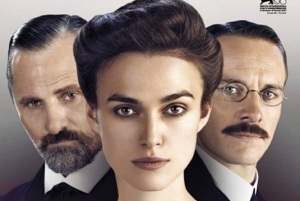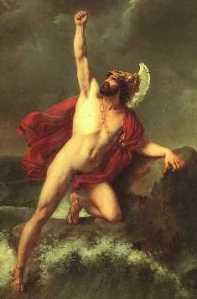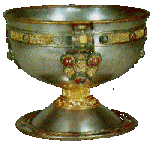Heidekolb's Blog
A Dangerous Method ~ The Movie ~ Jungian Reflections, Part 1
5 Comments
Please go and see this movie > adangerousmethod ~ It is a good one. I know I will see this film more than once. There is such a richness to it. It takes us back to when it all began. It takes us back to the old world of Victorian Vienna and Zurich, a period of suffocating moral constraints, yet also a period that brought forth new manifestations of a changing consciousness. It takes us back to a time before Jung was Jung, when Freud was the enfant terrible of Viennese’ medical world and that mysterious, and yes, most dangerous method of what eventually became the talking cure of Freud’s psychoanalysis and Jung’s analytical psychology were still a bloody mess. David Cronenberg, the movie’s director, provides us with a glimpse into the labor pangs of one of the most important cultural events of the 20th century, the birth of the therapeutic, analytic relationship, albeit an endangered species today.
 Freud, Spielrein and Jung, portrayed by Viggo Mortensen, Keira Knightley and Michael Fassbender
Freud, Spielrein and Jung, portrayed by Viggo Mortensen, Keira Knightley and Michael Fassbender
The film introduces us to these three players of this birthing process. While Freud and Jung are household names in psychological circles, very few are aware of how Sabina Spielrein contributed to the formulation of psychoanalytic theory. After all, she was not only a woman, but also a sick and troubled patient. It is much less known that she eventually became one of the first female psychoanalysts and that as muse for both men, she not only inspired significant ideas in their theories, but may have in fact verbalized important concepts for the first time, without ever being credited for any of them.
I attended a screening of this film. David Cronenberg was present for a Q & A. In one of his comments he remarked on how he was primarily interested in showing that new relational territory Jung had entered with his patient/most likely lover Sabina Spielrein. Cronenberg was not interested in elevating or demonizing any of the players of that curious love triangle. It seemed he rather payed homage to Jung’s and Spielrein’s courage as they stumbled and fell into their desires and fears lurking out of the recesses of their psyches.
They did not yet know what they were getting into as Jung put Freud’s theory into practice. Boundaries were not yet clearly delineated of what was to become the sacred, precocious and highly dangerous space of the analyst/patient relationship. May we withhold all judgment for now, as Cronenberg did so beautifully in his film, and simply honor the courage and tricksterish folly as Jung and Spielrein ventured deeper into new territory of their inner landscape.
A unique relationship develops as patients dare to find words for the images sent forth from their psyches’ secret chambers. The analyst must follow and relate without judgment. The process of following and relating in earnest will take the analyst to unknown, possibly frightening and dangerous places within himself. This is the nature of the work. It is its excitement and its danger.
This openness towards another is erotic in its truest sense. Yet we must remember that Eros is a god, an archetypal force, that can and often does wreak havoc with our minds and personas, especially if they are built on the shaky grounds of collective values.

The psychoanalytic relationship has become much more refined but has also lost much zest and verve since its early inception. We do know now that sexual contact with patients causes tremendous, sometimes irreparable harm to their psyches and is to be resisted at all cost, even if desired and initiated by the patient. (I believe this to be true not only for psychoanalysts, therapists, but for most teachers, mentors, practitioners and “gurus” of all creeds). Yet while the concrete enactment must be denied, the often heart and gut wrenching power of eros, which may or may not manifest in a sexual way, needs to be consciously held, sometimes even suffered in any analysis worth its salt. But without love there is not much chance for transformation. Yet the shadow of authentic eros is power driven predation and the field of psychotherapy has seen its fair share of it, and still does in many ways.
There is much to learn from the courage and mistakes of our analytic ancestors. It takes courage to see and be seen and to relate and accept what is within ourselves and the other. Mistakes will happen in all our relational lives, inside and outside the consultation room. It takes even more courage to acknowledge them as such.
Salute to the bravery of all the seekers, patients and analysts, analysts and patients as they subject themselves to mutual scrutiny.

The film is based on John Kerr‘s scholarly and carefully researched book with (almost) the same title ~ A Most Dangerous Method ~ an excellent book, I highly recommend it.
For those who wish to dive deeper into the history of psychoanalysis I suggest, The Discovery of the Unconscious by Henri Ellenberger.